#qutb
Explore tagged Tumblr posts
Text

Detail of Delhi's Victory Tower, Ghurid, early 13th century. The Qutb Minar—also spelled Qutub or Qutab Minar—is a towering minaret and victory monument that forms part of the Qutb complex, located on the site of Delhi's oldest fortified city, Lal Kot, established by the Tomar Rajputs. Situated in the Mehrauli area of South Delhi, India, it is recognized as a UNESCO World Heritage Site. Construction began around 1199 and continued until 1220, resulting in a structure with 399 steps that remains one of Delhi's most visited heritage landmarks. The tower's construction was initiated by Qutb-ud-din Aibak following his victory over Prithviraj Chauhan, the last Hindu ruler of Delhi before the Ghurid conquest, symbolizing the start of Islamic rule in the region. Aibak completed only the first level, with subsequent rulers of the Delhi Sultanate continuing the work. In 1368, Firuz Shah Tughlaq reconstructed the upper sections and added a cupola.
#ghurid#ghorid#delhi#delhi sultanate#islamic india#islam#islamic history#islamic art#islamic culture#victory tower#qutb#minaret#middle ages#medieval art#medieval history#medieval architecture
21 notes
·
View notes
Text
Reading the Books of Sayyid Qutb
Do you advise the youth to read Sayyid Quṭb's books, and what is your opinion on Shaykh Rabīʿs books about Sayyid Quṭb, especially since some warn against them? هل تنصح الشباب بقراءة كتب سيد قطب وما هو قولكم في كتب الشيخ ربيع في سيد قطب وخاصة أن البعض يحذر منها؟ Sayyid Quṭb is considered a literary figure. He lived in disbelief for eleven years, سيد قطب يعتبر أديباً من الأدباء مكث مع الالحاد إحدى عشرة سنة then Allah, the Sublime and Exalted, guided him. ثم هداه الله سبحانه وتعالى، هداه الله سبحانه وتعالى He did not sit with al-ʿulamāʾ (ie: the scholars); ولم يجالس العلماء؛ he relied on his own fikr (ie: thoughts). اعتمد على فكره، He is considered a literary figure among those whom the verse of Allah, the Almighty, applies: {And the poets - [only] the deviators follow them; Do you not see that they roam in every valley and that they say what they do not do? - Except those who believe, do righteous deeds, remember Allah often, and defend themselves after they were wronged. And those who have wronged are going to know to what [kind of] return they will be returned} (26:224-227). فهو يعتبر أديباً من الأدباء ممن يصدق عليه وعلى أمثاله قول الله عز وجل: " وَالشُّعَرَاءُ يَتَّبِعُهُمُ الْغَاوُونَ *أَلَمْ تَرَ أَنَّهُمْ فِي كُلِّ وَادٍ يَهِيمُونَ *وَأَنَّهُمْ يَقُولُونَ مَا لَا يَفْعَلُونَ *إِلَّا الَّذِينَ آَمَنُوا وَعَمِلُوا الصَّالِحَاتِ وَذَكَرُوا اللَّهَ كَثِيرًا وَانْتَصَرُوا مِنْ بَعْدِ مَا ظُلِمُوا وَسَيَعْلَمُ الَّذِينَ ظَلَمُوا أَيَّ مُنقَلَبٍ يَنقَلِبُونَ ". So I ask the questioner: Have you read the entire “Tafsīr Ibn Kathīr”? فأنا أسأل السائل: أأنت قرأت < تفسير ابن كثير > كله؟، Have you read the entire “Ṣaḥīḥ al-Bukhārī”? أأنت قرأت < صحيح البخاري > كله؟، Have you read the entire “Ṣaḥīḥ Muslim”? أأنت قرأت < صحيح مسلم > كله؟، Have you read the entire “Musnad Aḥmad”? أأنت قرأت < مسند أحمد > كله؟، Have you read the entire “Sunan Abū Dāwūd”? أأنت قرأت < سنن أبي داود > كلها؟، Have you read the entire “Jāmīʿ at-Tirmiḏī”? أأنت قرأت < جامع الترمذي > كله؟، Have you read the entire “Sunan al-Nasāʿī”? أأنت قرأت < سنن النسائي > كلها؟، Or is it (only) after Sayyid Quṭb (that you will read those)? أم بعد سيد قطب؟!، Some people have become extremists in takfīr (ie: declaring Muslims as unbelievers) just by reading Sayyid Quṭb's books because of his frequent mention of “al-Ṭaġūt” and “al-Ṭaġūt.” بعض الناس أصبح بسبب قراءته في كتب سيد قطب أصبح من جماعة التكفير!!، بسبب نهجه وإكثاره من (الطاغوت)، و(الطاغوت)، Yes, we say: al-Ṭaġūt; but many times, we do not mean that this (Ṭaġūt) is outside the religion of Islām. نعم إننا نقول: الطاغوت؛ ولكن في كثير من الأوقات لا نعني أنه خارج من دين الإسلام. Therefore, I do not recommend reading the books of Sayyid Quṭb, فأنا لا أنصح بقراءة كتب سيد قطب، nor the books of Muḥammad al-Ġazzālī, ولا بقراءة كتب محمدٍ الغزالي، nor the books of Muḥammad Quṭb, ولا بقراءة كتب محمد قطب، nor the books of Zaynab al-Ġazzālī. ولا بقراءة كتب زينب الغزالية، Brothers, read the books of the Sunnah; يا إخواننا اقرؤوا كتب السنة؛ the book “Kitāb al-Tawḥīd” on the names and attributes of Allah by Ibn Khuzaymah, كتاب < التوحيد > في الأسماء والصفات لابن خزيمة، “al-Sunnah” by Ibn Abī ʿĀṣim, < السنة > لابن أبي عاصم، “al-Sharīʿah” by al-Ājurrī, < الشريعة > للآجري، “Sharḥ al-Sunnah” by al-Lālikāʿī, < شرح السنة > للالكائي، “al-Sunnah” by Muḥammad b. Naṣr al-Marwazī, < السنة > لمحمد بن نصر المروزي، the book “al-Īmān” by al-Qāsim b. Sallam, كتاب < الإيمان > للقاسم بن سلام، and so on from the kutub ʿulamāʾnā al-mutaqaddimīn (ie: books of our earlier scholars). وهكذا من كتب علماءنا المتقدمين Allah has preserved His religion: {Indeed, it is We who sent down the ḏikr (the Qurʾān) and indeed, We will be its guardian} (15:9). فالله قد حفظ دينه: " إِنَّا نَحْنُ نَزَّلْنَا الذِّكْر وَإِنَّا لَهُ لَحَافِظُونَ ". I do not declare Sayyid Quṭb an unbeliever; ولست أكفر سيد قطب؛ however, I say that his books should not be relied upon, ولكن أقول: إنه لا يعتمد عليه في كتبه، and may Allah reward our brother Rabīʿ b. Hādī, may Allah preserve him, who has advised and clarified the deviations and misguidances in the books of Sayyid Quṭb, and all praise is due to Allah. وجزى الله أخانا ربيع بن هادي حفظه الله تعالى خيراً فقد نصح وبين ما في كتب سيد قطب من الزيغ والضلال والحمد لله. From the tape: Suʾalāt Abī ʿAbd Allah al-Salafī al-Bunānī من شريط: (سؤالات أبي عبدالله السلفي اللبناني) 16th Ṣafar 1433H 16 صفر 1433هـ Muqbil b. Hādī al-Wādiʿī / مقبل بن هادي الوادعي https://muqbel.net/fatwa.php?fatwa_id=323 @ilmtest [https://t.me/ilmtest]
#islam#islaam#islamic#islaamic#muslim#salafi#salafiyyah#salaf#sayyid qutb#qutb#book#books#khuzaymah#khuzaimah#tawhid#tawheed#bida#innovation#rabee#madkhali#madkhalee#tirmidhi#dawud#bukhari#bukhaaree#bukhaari#kathir#katheer#tafsir#tasfeer
11 notes
·
View notes
Text

Stone Columns at Qutb Minar, India, 2003
Mickey Crisp
28 notes
·
View notes
Text
Oh! I never shared any pics on here from the India trip! Here are some samples.




#midori niji#original character#alternate universe#midoriniji#wayward wonders#india#qutb minar#taj mahal#dehli#agra#rishikesh#himalayas#ganges#ganga#monkeys
2 notes
·
View notes
Text

QUTAB MINAR - INDIA
62 notes
·
View notes
Text
“These Arab armies that you see are not there to defend Islam and Muslims, but rather to kill you! They will not fire a single shot at the Zionists.” — Sayyid Qutb
(He was executed by the Egyptian army in 1966)
2 notes
·
View notes
Text
A Morrocan ex-Muslim take on the Palestinian-Israeli conflict.
This is again taken from reddit, text was posted by user named u/Benjazzi. I found it a very insightful read and I hope you will too:
I'm from Morocco. I'm atheist but my entire family is muslim. When it comes to the Israel-Palestine conflict, some muslims, sadly, can really go insane. For them, it's our tribe (Palestine moslems) against the enemy tribe.
Israel bombed South Lebanon after Lebanon bombed them ? "It never happened"
Israel stormed the holy Al Aqsa mosque because people throwing rocks took refuge inside of it ? "I don't believe it"
Mass Rapes ? "Fake news. It never happened"
"Our tribe can do no wrong" is literally how many people think.
To be fair, Jews can be tribal. But it's frankly nowhere to the same extent. The Jewish press is full of critics of the Israeli government and debates. Honestly, I have found that as long as you don't sing "Death to Israel" and are respectful, you can have very constructive conversation with most Jews and Israelis, even if you are critical. That's because they have a tradition of debate. Sadly, the muslim world lacks this.
Saudi Arabia just bought Cristiano Ronaldo for $1 billion. I have seen people on arab social media argue that Saudi Arabia doesn't help Palestinians because... the Saudi Prince is a puppet on a jewish-american string. It's totally stupid. He has publically humiliated the President of the United States.
Why he doesn't help ? Well. The explanation is simple. He doesn't give a fuck. But the idea that a sovereign arab leader might not care about "our tribe" is so shocking and so disturbing that some people need to find sinister foreign hands to explain it.
Egypt is right now shooting people who try to leave Gaza. I have seen Egyptians argue that the Egyptian President is....secretly jewish. "Sisi is a jewish dog, his mom is jewish". I mean... really 🤔 ?
The idea that a sovereign arab leader might not care about "our tribe" is so shocking and so disturbing to them that many Egyptians have to find some insane conspiracy to explain it.
This is the kind of cognitive dissonance that I sadly see all around me.
NYT publishes an investigation critical of Israeli behavior? I post it online. Reactions on social media ? "Great job ! Fucking zionist pigs. The New York Times just exposed them"
NYT publishes an investigation critical of Palestinian behavior ? I post it online. Reactions on social media ? "Fuck your propaganda. New York Times is pure zionist filth"
"Our tribe can do no wrong".
A newspaper is reliable or fake... simply depending on how it portrays the tribe !!
Then you have Islamism on top of that. The cherry on the chocolate cake.
Read the comment I posted here :
The real problem today in our world is a guy called Sayed El Qutb.
He was an egyptian intellectual who is considered the father of ALL Islamists.
In his books, he argues that the best period for muslims was under the Islamic Caliphates, when the entire world respected and feared muslims. He believes the Islamic World went through cultural, political and economic decline due to not enough Islam. According to him, only a return to PURE Islam™ can make muslims great again. Sayed El Qutb endorsed creating an Islamic State based exclusively on Sharia Law. He praised violent jihad against the non-muslims (kouffars). He opposed secularism, gender mixing, and hated jews ("filthy pigs") and atheists.
He was hanged in 1964 for attempting to murder President Nasser. But his books have spread very successfully. Sayd Qutb is to islamists what Karl Marx was to communists. Al Qaeda, ISIS, Hamas, Hezbollah, Al Nosra front. All of their creators read his books and deeply admired him.
3 countries are particularly behind Islamism : Saudi Arabia, Iran and Qatar.
The first one is Saudi Arabia. In the 70s, using their oil money, they opened a special university called the University of Madinah. Anyone can go study there for free to become an Imam. Saudis will pay your tuition and boarding school. Your food ? They will pay for it. These imams all learned the ideas of Sayed Al Qutb. Westerners are filth, jews are vile pigs, women must obey men, women must be veiled, secularism is a form of mental disease.
After graduating , these Saudi-trained Imams were sent back to their country in Africa, Europe, or Malaysia, to spread Saudi soft power. And this happened for decades and decades. They were the most successful in 2 countries in particular : Pakistan and Egypt. In these countries, a generation of public school teachers received Saudi textbooks. Imagine the result on the general population.
The second country to blame for Islamism is Iran.
In 1979, a secular dictatorwas overthrowed and replaced by a religious dictator. Ayatollah Khomenei became Supreme Guide of the Revolution. He always wears a black turban on his head. That black turban means he is "sayyed", a direct descendent of Muhammed. Ayatollah Khomenei was a deep admirer of Sayed Qutb. He translated all Sayed El Qutb's work into Farsi to "educate iranian people".
His new Islamic regime started using their oil money to fund $$$ radical islamic groups all around the Middle East. In Irak, in Pakistan, Lebanon, in Syria. His successor, "Ayatollah Khamanei" has pursed his heritage. Iran published a Fatwa calling for any muslim who can to murder the UK poet Salman Rushdie for his books. Salman Rushdie has been forced to live in hiding for 20 years. He was recently stabbed during a literary festival in America.
In 1984, Iran published an official postal stamp paying tribune to Sayed El Qutb, calling him a true martyr of Islam. Also, several streets and avenues in Iran were named "Qutb" as a tribute.
The third country to blame is Qatar. They are the favorite headquarter of all islamists in the world today. Al Nosra Front, Al Qaeda, Hamas, The Afghan Talibans. You always find Qatar.
In Morocco, Qataris are big supporters of the local Islamists (حركة التوحيد والإصلاح)
I can testify that what Al Jazeera spreads in arabic is far far worse than what they actually say in english. They had a TV show with a guy called Youssef Al Qaradawi. This guy is a disciple of Sayed El Qutb. He tells people it's okay to beat up your wife, that jews are disgusting pigs, that Islam will take over Europe. His TV show was watched by 60 million people every week on Al Jazeera Arabic. 60 million people. Every week. In 1998, they published a documentary called "Ben Laden : One man standing against an empire"
Here is another thing you won't see in Al Jazeera English. Basically, the rape, slaughter and torture of Israeli civilians is just presented as "a wonderful victory" on Al Jazeera Arabic. That's it. They won't give any more detail. No pictures. Anyone who seriously studies the military tactics of Hamas, reading academic papers, comes to the conclusion that the Israelis - whatever you think about them - aren't actually lying. Hamas really does use Palestinians as Human Shields. It's never mentioned on Al Jazeera. Never. In fact, their "journalists" told a palestinian shouting this to shut his damn mouth.
Saudi Arabia, Iran and Qatar. These 3 countries have become the cancer of Islam.
And they have used their money to spread their influence, including in Morocco. Now the cancer has spread.
The question is how do we cure it? I don't know. I have small hopes for Saudi Arabia because even if their Prince is a dictator, he genuinely wants to improve his country. He is reforming textbooks to remove antisemitism, allowing women to drive, allowing music, ending forced gender segregation, etc... But the other two countries remain a major problem.
#israel#palestine#gaza#hamas#hamasisisis#saudi arabia#hostages#israel hamas conflict#freegazafromhamas#current events#iran#lebanon#misinformation#propaganda#Islam#Muslim#qatar#Sayed El Qutb#Egypt#Ayatollah Khomenei#Ayatollah Khamanei#fatwa
6 notes
·
View notes
Text
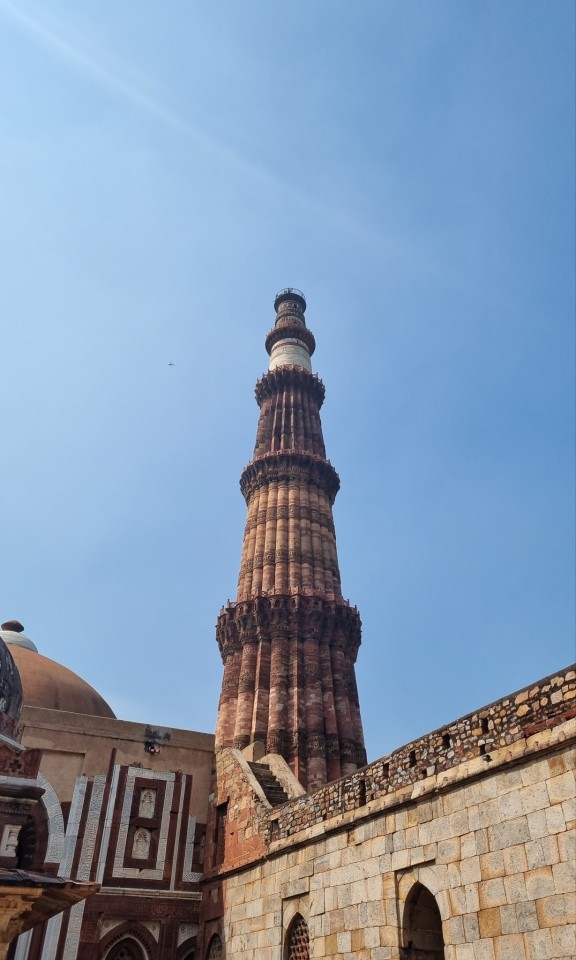
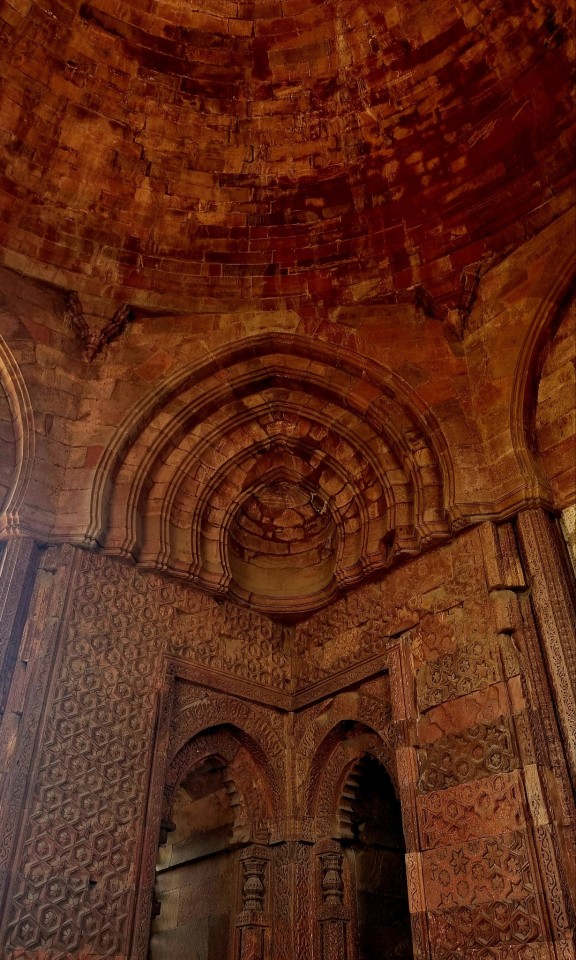
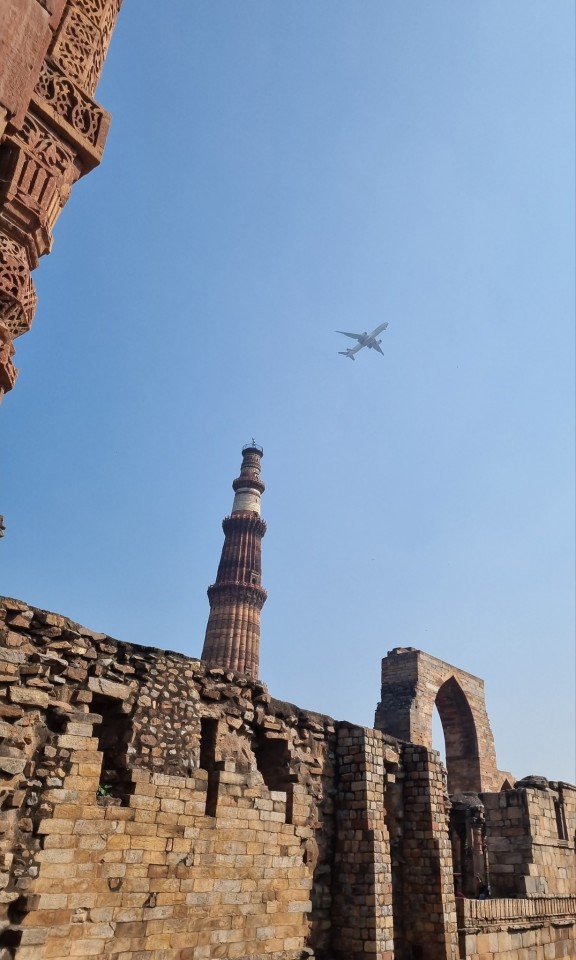
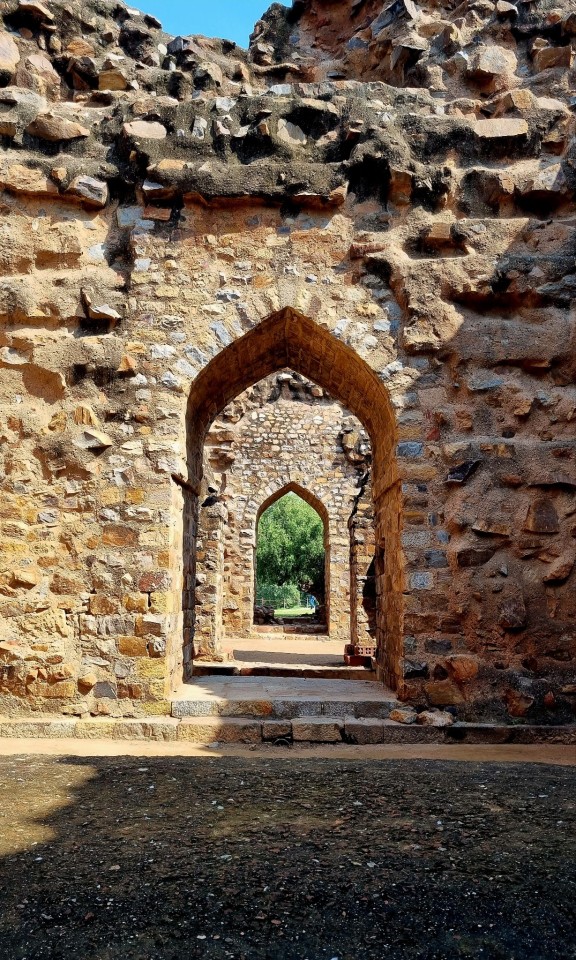
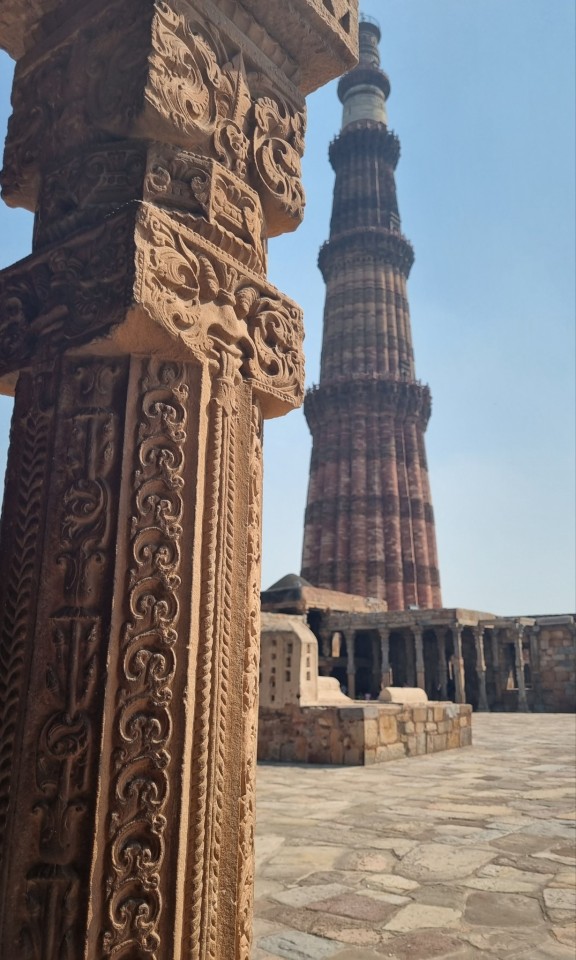
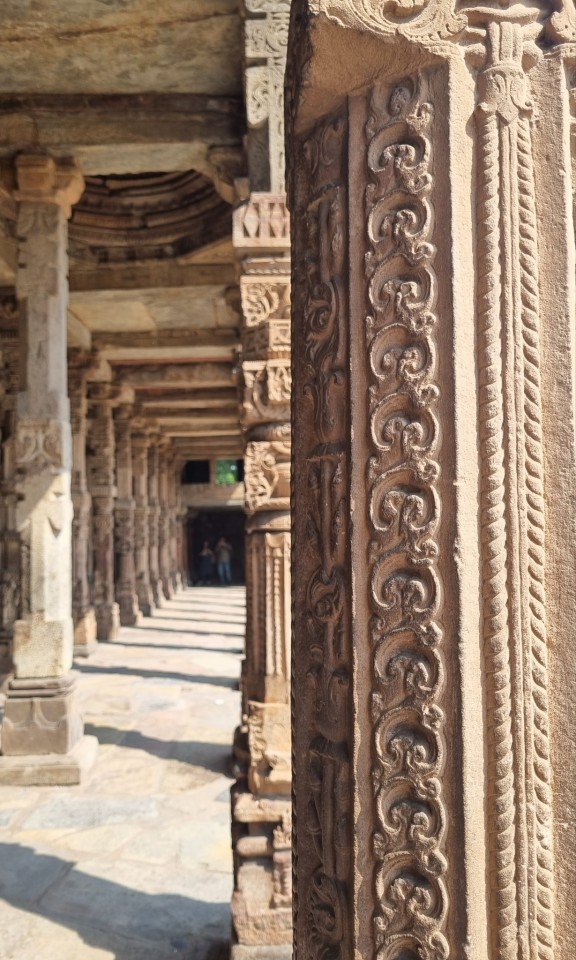
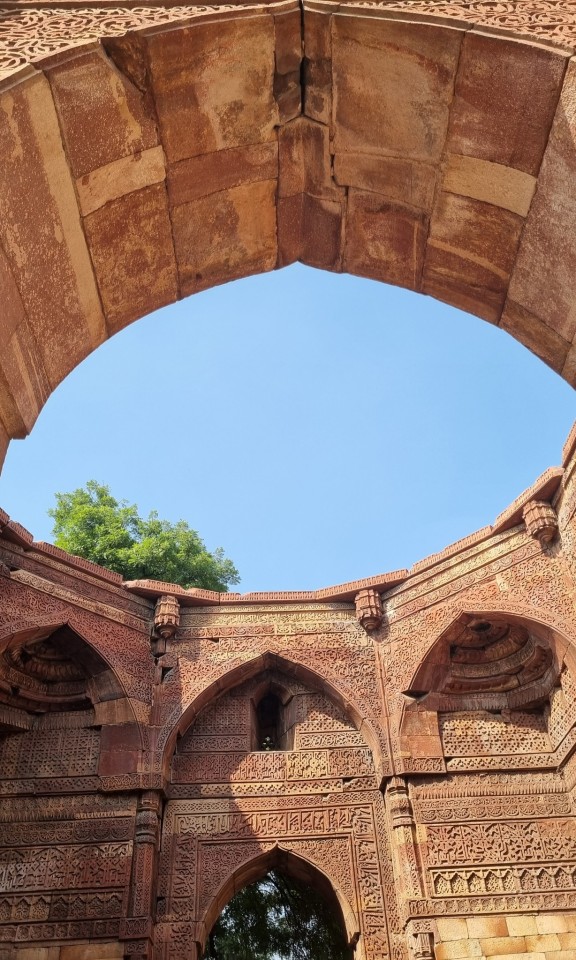
Please like or repost if downloading. Please give credit if you're sharing it online.
#qutub minar#history#monuments#dilli#delhi#new delhi#india#cultural#asia#delhi sultanate#mughals#mehrauli#qutub complex#indo islamic architecture#qutb ud din aibak#iltutmish#tughlaq dynasty#lodi dynasty#wallpaper#historical wallpapers#phone wallpapers#indian monuments#historical monuments#for you#trending#tumblr
18 notes
·
View notes
Text
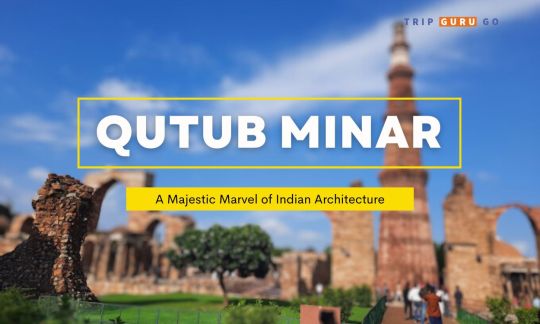
#Qutub Minar#Indian Architecture#UNESCO World Heritage Site#Delhi#India#Indo-Islamic Architecture#Historical Landmark#12th Century Monument#Majestic Tower#Cultural Heritage#Tourist Attraction#Architectural Marvel#Delhi Sightseeing#Qutb Complex#Delhi Tourism#Heritage Conservation
0 notes
Text
by Chad Merlin
Küntzel makes a distinction between anti-Judaism, which he deems an ancient phenomenon based on religious polemics, and antisemitism, which is a modern concept coined in 1879 by Friedrich Marr. “In other words, anti-Judaism deems all Jews to be evil, but antisemitism views all evil to be Jewish,” he stressed.
“The Quran itself is not antisemitic. It has some anti-Jewish statements, and some verses speak in their favor, but those sayings against the Jews have more of a religious, polemic aura to them than those modern tropes,” he continued.
“The known status of Dhimmitude, in which Jews and other minorities under Islamic rule are supposed to be ‘sheltered’ but also degraded and harshly discriminated against, can also not be viewed as antisemitic in and of itself.
Nowadays, Islamist and European antisemitism are well mixed. For instance, Hamas leader Fathi Hamad was quoted saying, “We must attack every Jew on planet earth,” calling to slaughter and kill them and tear them into pieces ‘with Allah’s help.’ This is not Dhimmitude, and not at all what the Quran says. This was learned directly from Nazi antisemitism, which called to kill every Jew on planet earth – not to shelter and degrade them as Dhimmis.”
According to Küntzel, Nazi Germany and its ideology had a strong influence over the Arab and Islamic world. “That Jews don’t deserve the dhimmi status but that they must be killed to save the world is a new concept in Islam, a’redemptive antisemitism’ as Saul Friedländer coined it. The Nazis believed that Jews are responsible for every evil in the world thus must be killed to rid the world of all evil. Nowadays many Islamists say the same, that Jews must be killed in order to save Islam from destruction,” he added.
“This is a kind of paranoid thinking, brought into Islamic thought by Sayyid Qutb,” Küntzel continued, referring to the man regarded as the founding father of Salafi Jihadism and a direct disciple of the Muslim Brotherhood founder, Hassan Al-Banna.
“Qutb popularized this kind of thinking within the Muslim Brotherhood around 1951, but it can also be found before him in a 1937 pamphlet titled Judaism and Islam, which pictures Jews as fighting to destroy Islam, calling to fight and kill them before they have a chance to destroy Islam. So again, this is a parallel between European and Islamic antisemitism.”
According to Küntzel, the aforementioned pamphlet was published anonymously in August 1937 as an attempt to drown the Peel Commission’s first suggestion of a two-state solution.
“This was the first compromise plan for the Middle East, supported by some Arab leaders such as Emir Abdullah and favored by the Zionist leadership. However, the Palestinian mufti Hajj Amin Al-Husseini fought against it with all his might, and he was supported by the Nazis, who also sought to prevent a small Jewish state or ‘Jewish Vatican’ as they called it.”
Küntzel argued that the Nazis’ influence led to the eradication of the balance between moderate and radical forces in Islamic circles. “The 1937 pamphlet was probably the first time in which the myth of ’Jewish power’ typical of European antisemitism was mixed with an Islamic myth of Jews plotting to kill Mohammed – and all in an attempt to prevent a Jewish state.”
107 notes
·
View notes
Text

Though Qutlugh Turkan (c. 1208/1213–1283) began her life as a slave, she rose to become a ruler in her own right, ushering in a golden age for her lands.
A resourceful wife
Qutlugh Turkan was likely born in Transoxania between 1208 and 1213. She was enslaved as a child, purchased by a merchant from Isfahan, and given an excellent education. In 1235, she married Qutb al-Din Muhammad, the nephew of Buraq Hajib, the founder of the ruling dynasty of Kerman (in present-day Iran), a local power that emerged after the Mongol invasions.
After Buraq’s death, the Mongol Great Khan Ögedei granted Kerman to Buraq’s son, prompting Turkan and her husband to move to Transoxania. During this period, her intelligence and resourcefulness proved vital to her husband’s survival, earning him the of the local nobility.
In 1252, Qutb al-Din was installed as the ruler of Kerman. When he died five years later, it was time for Turkan to step into power.
Queen of a golden age
Turkan assumed control of Kerman in 1257, even though her husband’s male heirs were alive. The transition appears to have been smooth, with little opposition to a woman ascending the throne. She quickly established her authority, dispatching gifts to secure recognition of her rule.
Initially, Hulegu Khan granted her authority only over civil affairs, but Turkan’s persistence won her full control, including military oversight. She ruled independently for 26 years, a period celebrated as a golden age for the region of Kerman. The khutbah (Friday sermon) was proclaimed in her name in mosques, and her name appeared on coins.
Her reign brought stability and economic prosperity. Turkan was known for her equitable administration of justice and her benevolence. During times of famine, she opened the granaries to feed her people. She also initiated major building projects, including a madrasa, a hospital, a mosque, and fortified borders with new fortresses.

Coin minted during Turkan's reign
Challenges and Deposition
Turkan forged alliances with the Mongols, even marrying her daughter Padishah Khatun to Abaqa Khan, the ruler of Iran starting in 1265. She also sent troops led by her stepson (or possibly her biological son) Hijaj Sultan to support Abaqa.
However, Hijaj turned against her, publicly mocking her with this verse:
Young are your destiny and star, but old is your fortune; the one that is old should make way for the young.
Turkan sought Abaqa’s support and was reaffirmed as the ruler of Kerman. Hijaj’s attempt to depose her failed, forcing him to flee to Delhi, where he died a decade later.
Turkan’s fortunes changed with Abaqa’s death. His successor, Tegüder Ahmad, granted Kerman to her stepson, Suyurghatmish, ending her rule in 1282. Her efforts to reclaim the throne were unsuccessful and she died shortly afterward in a city in northern Iran.
Turkan’s daughter, Padishah Khatun later reclaimed the throne and ruled Kerman in her turn.
Enjoyed this post? You can support me on Ko-fi!
Further reading
De Nicola Bruno, Women in Mongol Iran: The Khatuns 1206-1335
Mernissi Fatima, The Forgotten queens of Islam
“QOTLOḠ TARKĀN ḴĀTUN”, Encyclopedia Iranica
#Qutlugh Turkan#history#women in history#women's history#historyedit#13th century#medieval women#ruling queens#queens#powerful women#iran#iranian history#kerman#central asian history
78 notes
·
View notes
Text

3,200-Year-Old Egyptian Tomb of Ramesses III’s Military Commander Uncovered
Egyptian archaeologists have discovered a 3,200-year-old tomb thought to be that of a senior military commander during the time of Pharaoh Ramesses III. The tomb was discovered at the Tell el-Maschuta site, also referred to as Tell el-Maskhuta, in the Ismailia governorate. The discovery illuminates the strategic significance of the area in protecting Egypt’s eastern borders during the New Kingdom period.
Dr. Mohamed Ismail Khaled, Supreme Council of Antiquities Secretary General, underlined the significance of the discovery, noting that the Tell el-Maschuta area was a key military outpost. Existing fortifications and garrisons in the region suggest that it played a crucial role in defending Egypt against external threats.
The tomb, constructed using mud bricks, features a main burial chamber and three other surrounding rooms whose walls are covered with white mortar. Inside, archaeologists discovered a collection of artifacts that indicate the deceased was a high-ranking military official. The most significant items discovered were a gold ring with the cartouche of Ramesses III, bronze arrowheads, and a small ivory box. The artifacts suggest the individual was the pharaoh’s military leader.



One of the most fascinating finds was a set of inscribed pottery vessels with the name of Pharaoh Horemheb, who reigned from around 1323 to 1295 BCE. A former military leader before becoming a pharaoh, Horemheb ruled over a hundred years prior to Ramesses III. The fact that his name appears on the pottery indicates that the tomb could have been reused over time.
Further evidence of the reuse of the tomb came to light through the human remains recovered inside. A skeleton covered in cartonnage—material made up of linen and plaster—refers to the fact that the burial had been altered in later periods. In addition to skeletal remains, archaeologists also recovered alabaster vessels, semi-precious stones, and amulets depicting the gods Taweret and Bes, as well as the Eye of Udjat, a protective symbol in Egyptian mythology.
Beyond the military commander’s tomb, archaeologists also uncovered a series of collective and individual burials dating to the Greco-Roman and Late Periods. These burials contained skeletal remains and funerary artifacts that highlight the region’s rich cultural history as a crossroads between civilizations. Professor Qutb Fawzi Qutb, director of the Lower Egypt and Sinai Antiquities Department, noted that the combination of Egyptian and Greco-Roman elements in the tombs provides valuable insights into the region’s diverse historical influences.



In addition to the tomb of the military commander, archaeologists also unearthed a series of collective and individual burials that dated to both the Greco-Roman and the Late Period. The burials contained skeletal remains and artifacts revealing the region’s rich cultural history as a crossroads between civilizations.
Ramesses III, who ruled from about 1184 to 1153 BCE during Egypt’s 20th Dynasty, is often regarded as the last great pharaoh of ancient Egypt. His reign was marked by military conflicts, most notably his conflicts with the Sea Peoples, a group of seafaring raiders that threatened the stability of Mediterranean civilizations. In the most pivotal battle, the Battle of the Delta in 1175 BCE, the Egyptian navy outmaneuvered the invaders with tactical superiority on the waterways of the Nile.
The recently discovered tomb brings intriguing speculations about the occupant’s role in these wars of antiquity. If this individual buried within was a military commander under Ramesses III, he may have played a crucial role in defending Egypt.
The Egyptian Tourism and Antiquities Ministry stated it would go ahead with more excavations and studies on the site in the hopes that further studies will reveal additional information on Egypt’s military and cultural history.
By Dario Radley.

#3200-Year-Old Egyptian Tomb of Ramesses III’s Military Commander Uncovered#Tell el-Maschuta#Tell el-Maskhuta#Pharaoh Ramesses III#ancient graves#ancient tombs#funeral goods#grave goods#ancient artifacts#archeology#history#history news#ancient history#ancient culture#ancient civilizations#ancient egypt#egyptian history
25 notes
·
View notes
Text

The Arab world wasn’t always veiled in black. Not long ago, cities like Cairo, Damascus, and Baghdad pulsed with modern life. Women wore elegant dresses, walked freely in public, and attended universities alongside men. Intellectual discourse flourished. Secular governance, legal reforms, and cultural expression were on the rise. The roots of aspiration toward enlightenment and progress were planted in these cities.

[ Cairo, 1960s ]
This shift was largely due to the British and French mandates, which introduced secular systems and laid the groundwork for modern governance. These changes set Arab nations on a trajectory toward modernity. However, that trajectory was short-lived.
Thinkers like Hassan al-Banna, Sayyid Qutob, Abul A'la Maududi, and Mohammad al-Ghazali saw the rise of secular laws, women’s liberation, and Western-style education as a calculated attempt to dismantle Islamic identity and replace it with Western moral and cultural norms, so they launched an ideological war against secularization. Movements like the Muslim Brotherhood embodied this resistance; however, in the early stages, they were aggressively suppressed by nationalist Arab regimes that saw them as a threat to state power. Chief among these regimes was Gamal Abdel Nasser’s Egypt.

[ Sayyid Qutb ]
Nasser didn’t only reject theocracy, but also monarchism. His growing popularity and ambition to lead a united Arab world posed an existential threat to the conservative monarchies of the Gulf, especially Saudi Arabia. King Faisal of Saudi Arabia recognized that he and the Muslim Brotherhood shared a common enemy. Under the guise of defending Islam and combating communism, he extended support to Brotherhood figures who had been imprisoned or exiled by Nasser’s regime.
In 1962, King Faisal convened the General Islamic Conference in Mecca, which led to the creation of the Muslim World League, a Saudi-sponsored institution designed to counter Nasser’s pan-Arab secularism with a pan-Islamic ideological front. It became the engine of Saudi-backed Islamic revivalism. What followed was the launch of what would later be known as the Islamic Awakening, an orchestrated campaign to re-Islamize the Arab world.
In 1967, with the Six-Day War, Nasser’s crushing defeat dealt a fatal blow to secular Arab nationalism. His ideological grip on the region dissolved almost overnight. With Nasser weakened and the Islamic Awakening's infrastructure in place, the Arab susceptibility to maintain the modernization brought by the mandates was shattered in real time.

[ King Faisal and Gamal Abdel-Nasser. ]
With billions in petro-dollars, Saudi Arabia funded thousands of schools, mosques, and Islamic publications across the Arab and Muslim world. Clerics, armed with state-sanctioned messaging, replaced intellectuals. Secular curricula were gutted and replaced with rote memorization of doctrine. The hijab, once a rarity in places like Cairo and Beirut, was reframed as an Islamic obligation. Gender mixing, freedom of thought, even music and cinema were labeled Western degeneracy. Within two generations, Arab women lost the freedoms their mothers had enjoyed. Universities became pulpits. Religious dogma shaped civil institutions. Entire societies that once flirted with secular modernity were now enforcing religious orthodoxy. The transformation was rapid, deliberate, and well-funded.

[ School teachers posing for a photo with the Minister of Education in Egypt, 2025. ]
Today, the very engine that reshaped the Arab world is no longer confined to the Middle East. It’s making its way into Europe. Europe now stands at risk of repeating the Arab world’s fall because of ideological infiltration. The same model used to Islamize the Arab world is being applied to Europe. Gulf-funded mosques and Islamic centers are spreading across major cities. Religious schools, community centers, and lobbying groups push for Sharia-based “accommodations” under the language of multiculturalism. Separate swimming pools, halal-only cafeterias, calls to prayer in public. Free speech is being eroded under the guise of hate speech. Secularism is demonized as intolerance, while religious conservatism is portrayed as empowerment.
The same social pressures and ideological tactics that once transformed Cairo and Amman are now visible in Brussels, London, and Berlin. The question now is whether Europe can learn from the Arab world’s fall, or whether it too will walk willingly into ideological submission. The veils, the censorship, the religious courts—they’re not distant cultural artifacts. If Europe doesn’t act, it will wake up to find that the monster didn’t stop at the Arab world’s borders. It just took its time crossing over.

#Dan Burmawi#islam#islamic supremacy#islamic takeover#this is islam#theocracy#islamic regime#religion#religion is a mental illness
12 notes
·
View notes
Text
Menulislah
Sejak menonton film catatan akhir sekolah dan radio galau FM, ketertarikan akan dunia menulis mulai muncul. Kadang iseng-iseng buat buku harian, nulis di blogspot, Instagram, dan sekarang tumblr.
Ketika kuliah, membaca kebiasan menulis tokoh-tokoh Islam besar seperti Buya Hamka, Sayyid Qutb, Abbas As-Sisiy, Yusuf Qardhawy, dan tokoh lainya, membuat diri ini menyadari betapa sesederhana tulisan mampu merubah zaman saat itu dan juga setelahnya.
Menulis tak hanya menulis, namun memberikan ruh dalam tulisan agar mengingatkan manusia untuk belajar dari kesalahan dan mendekat kepada ketakwaan.
Sejalan dengan apa yang dikatakan oleh Ust. Sholikin Abu Izzudin, bahwa tulisan kita itu haruslah senantiasa memberikan hikmah, pengingat, dan juga menyalakan optimisme selayaknya pribadi seorang muslim agar lebih semangat lagi untuk berbuat baik dengan orang lain, dan tentu harus bertanggungjawab.
3 bulan kebalakang, mencoba belajar menulis untuk mengikuti jejak orang-orang shaleh, berbagi ilmu, menyalakan optimisme, dan yang paling minimal bermanfaat untuk orang lain melalui tulisan.
So, here we go. Bahtera Dakwah dan Menyala Kesatuan.
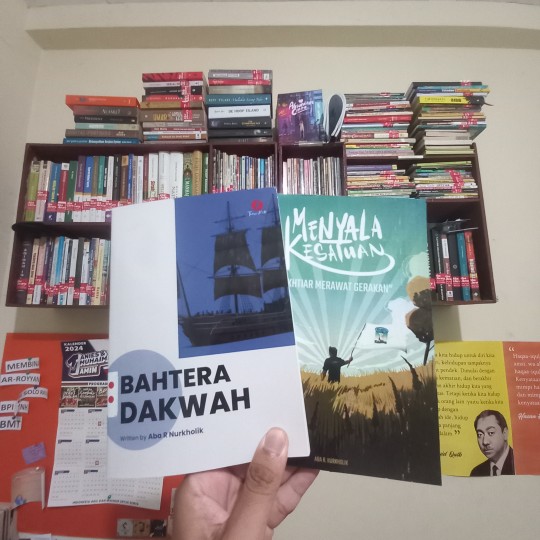

Surakarta, 20 Ramadan 1445 H.
43 notes
·
View notes
Text
i myself wouldve thoroughly enjoyed having a hand in electrocuting and waterboarding that cunt, sayyid qutb, and all of his ikhwani friends, and making them understand what being a slave really means
5 notes
·
View notes
Text
NAHHH I DON'T WANNA GO HOMEEEEEE TvT
Basically I have been travelling since Tuesday, and today is finally the day I'm returning back to Mumbai. So, me and my family had come for a short trip to Delhi and one day to Agra, and it was so mesmerizing!! My mom was so elated when she could finally catch a glimpse of her childhood place, i.e, East of Kailash in Delhi! :D
These days were so fun, istg. I went inside Qutb Minar (and yeah, ofc Chand Sifarish was going on in my mind), Red Fort (Diwan-i-aam had the place where the Emperor sat and addressed his people, yk, an elevated area like we can see in the movie Jodhaa Akbar, his aasan was kept down so that we could have a glimpse of it, it was made out of marble. Entry wasn't allowed inside Diwan-i-khaas, but the intricate designs and carvings of marble there would just keep anyone wondering how the people of that time had such amazing skills when technology wasn't available, and yes, the most amazing part is, EVERYTHING WAS FREAKING HAND-MADE!!!!), Lotus temple (it's beautiful from the outside, but there wasn't really anything to explore inside since it's just a huge prayer room where people came to meditate and pray). We caught glimpses of the India Gate, Rajpath, Rashtrapati Bhawan, Supreme Court, and ofc, a posche area like Connaught Place couldn't be missed!! We explored well-known market places like Karol Bagh, Lajpat Nagar and Sarojini Market.
Now coming to Agra. Our travelling time from Delhi to Agra was around 3.5 hours as we travelled through the expressway. Visited the grand Taj Mahal that day itself, and that sight took over my heart! It looks even more beautiful in reality than it does in pictures! Got to know a lot about the place, the designs which were made of gemstones, visited Shah Jahan and Mumtaz Mahal's tombs inside (photography inside wasn't allowed), and so much more which I can't really explain in detail via this post. The next day, we went to Agra Fort, which covered about 3 km in area (yes it's that huge). Only 25% of the Fort is open for public, the rest of 75% has been occupied by the Indian Army, but just the 25% of the Fort really told us about the history of the Mughals. Mehtaab Bagh, where Shah Jahan wanted to build a black Taj Mahal for him, was visible from the Agra Fort. Building Taj Mahal required 60% of their wealth, and the leftover could not have been used to build another Taj Mahal, hence it could not be completed, and today, we can only see the platform which could be built only.
Fact - their security measures were insane. The front side of the Fort had huge gorges where crocodiles and Gharials were kept. There was also a small area of dense trees having wild animals ahead the gorge. So that means, any intruder who came inside would be instantly killed by these animals. Wild! These animals were kept hungry the whole night and given food in the morning intentionally so that they remain vigilant, hungry and ferocious the whole night in case anyone tries to enter and attack.
Yep, the days went like this!!
😄😄😁😁
8 notes
·
View notes